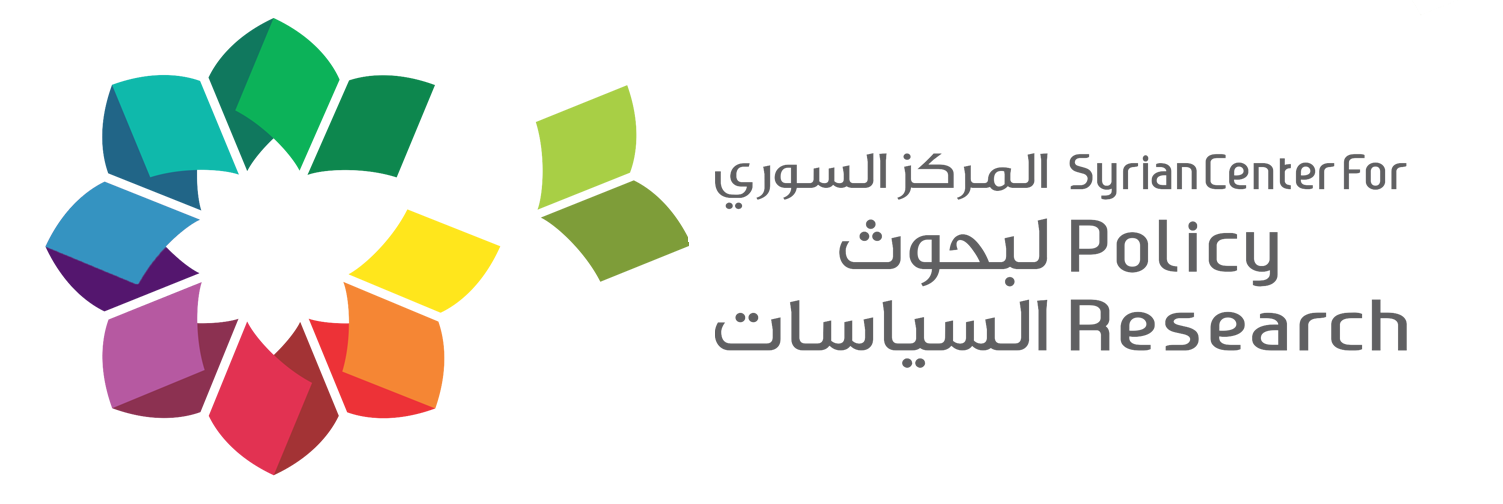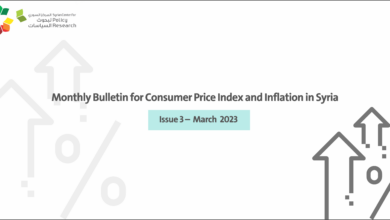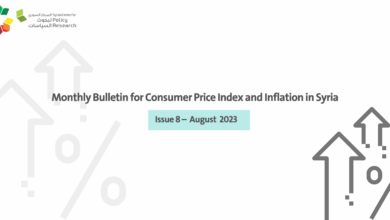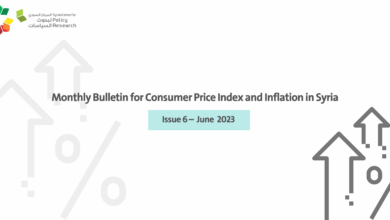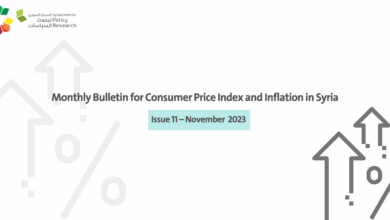Syrian Center for Policy Research:
The bulletin provides an independent assessment of consumer prices and the rate of inflation in all Syrian regions, based on a monthly survey of consumer prices carried out by the Syrian Center for Policy Research (SCPR) since October 2020. The SCPR had developed a methodology for building a price index based on components of consumer basket, weighting, and market selection (See SCPR’s Consumer Price Index in Syria)
This bulletin presents the findings of the monthly consumer price survey and the changes in the Consumer Price Index (CPI) for April 2023 (with 2021 as the base year) broken down by region and the major consumption groups. Based on the CPI changes, the bulletin provides an estimate of the cost of living and poverty lines at local level in all Syrian regions.
The following results are highlighted:
- In April 2023, the general price index exhibited an annual inflation (Y-o-Y) of 76.7 per cent and a monthly inflation (M-o-M) of 3.6 per cent.
- The governorates of Tartous and Rural Damascus marked the highest monthly inflation rates, standing at 6.8 per cent and 6 per cent, respectively.
- April 2023 saw the Food & non-Alcoholic Beverages group taking the lead in contributing to the monthly inflation (M-o-M) with 3.6 per cent, making up 45.4 per cent of the total. Subsequently, Housing, Water, Electricity, Gas, and other fuel oils followed with a contribution of 19.6 per cent, trailed by the Household Equipment & Supplies, and Ordinary Maintenance Works group at 6.2 per cent, and the Clothes & Shoes group at 6 per cent.
- the abject poverty line for families, serving as an indicator of food insecurity, rose to SYP 1.19 million per month, marking an increase of SYP 41 thousand from March 2023. The lower poverty line increased by SYP 64 thousand from the previous month to reach 1.87 million, while the upper poverty line saw an SYP 88 thousand increase, reaching 2.59 million.
- The wage gap from the upper poverty line was 89 per cent for a university-educated employee in the public sector, 55 per cent for a worker in the private sector, and 54 per cent for a worker in the civil society sector, highlighting the elevated poverty levels, especially among public sector workers.
To read the bulletin in English:
Monthly Bulletin – Issue (4), 2023 (En)
To read the bulletin in Arabic:
Monthly Bulletin – Issue (4), 2023 (Ar)
